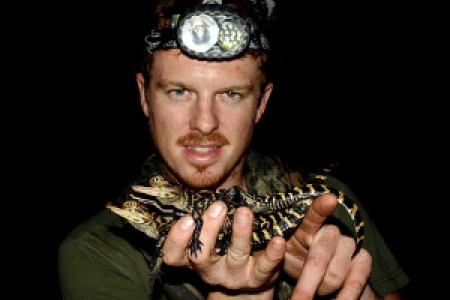‘Saltie’ tops list for crocodile aggression
The Australian saltwater crocodile’s feisty reputation has been reaffirmed in a study of juvenile crocodiles that compared the aggression levels of seven species from around the world.
In an academic paper released last night, the “Saltie” (Crocodylus porosus) was rated ahead of species from Papua New Guinea, South America and South-East Asia. The Australian freshwater crocodile (Crocodylus johnstoni) was ranked fifth ahead of the American alligator and the Indian gharial.
Charles Darwin University wildlife biologist Matthew Brien and co-author of “The good, the bad, and the ugly: agonistic behaviour in juvenile crocodilians” said the rankings were based on the observations of hatchling and juvenile crocodiles in captive conditions.
“While all species exhibited aggressive behaviour, there is significant variety in the nature and extent of the behaviour and some behaviour is unique to some species,” Mr Brien said.
“The Saltie is the only species that combines the actions of tail wagging and head striking. In certain situations they are inclined to smash each other in the head, an action that was rare in other species.
“Among the hatchlings, they were the only species to exhibit rapid flight, inflate their posture and raise their heads and tails.”
Mr Brien said most of the aggressive behaviour exhibited by adults to determine access to resources such as food, shelter and mates, was also exhibited by baby crocs.
“Aggressive behaviour is often present shortly after hatching, which supports the view that they may be hard wired from birth.”
Mr Brien said the shape of a crocodile’s head seemed also to be relevant, with the two most aggressive species featuring broad snouts.
“We found that the broad-snouted species often made contact with the head whereas the species with longer more fragile snouts often raised their heads to avoid contact involving the head.”
Mr Brien said three species made vocal sounds of sufficient intensity to generate ripples in the water, although only Papua New Guinea’s Crocodylus novaeguineae (second most aggressive) seemed to do so as an aggressive behaviour.
Mr Brien said the study, which involved the use of infrared CCTV cameras at research facilities in India and Australia, had shed light into the cryptic and secretive nature of species almost impossible to observe in the wild.
“This is just the tip of the iceberg. Further research should look beyond the visual and into the role of vocalisations and chemical cues,” he said.
The seven species in order of high to low aggression: Crocodylus porosus, Crocodylus novaeguineae, Cuviers Dwarf Caiman, Crocodylus siamensis, Crocodylus johnstoni, Alligator mississippiensis, Gavialis gangeticus.
